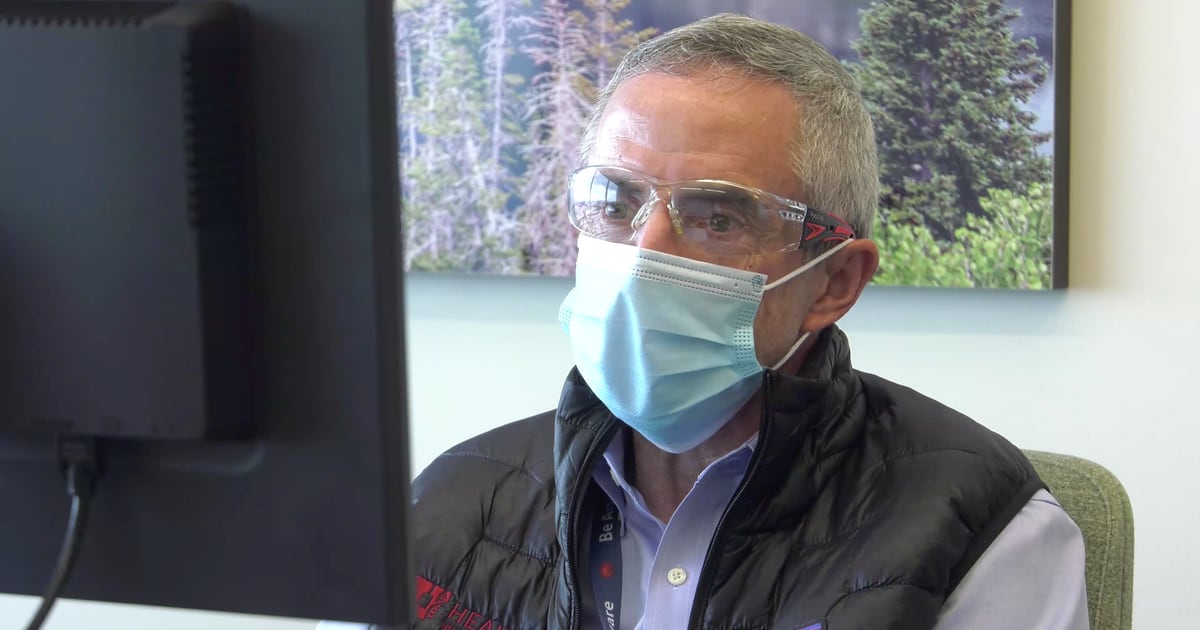But RSV, which targets mostly babies and young children, is likely to ‘come back strong’, says the doctor.
(Photo courtesy of Intermountain Healthcare) Dr. Andrew Pavia, director of epidemiology at Intermountain Primary Children’s Hospital and head of pediatric infectious diseases at the University of Utah Health.
Two diseases that usually affect children in the winter – pediatric flu and RSV – are virtually non-existent this year because of the COVID-19 pandemic, said a leading Utah pediatrician.
The bad news: both may return with a vengeance next year.
At Intermountain Primary Children’s Hospital, doctors have not hospitalized any children with RSV this season – and only one child in Utah has been hospitalized with the flu, said Dr. Andrew Pavia, director of epidemiology at Children’s Primary School and head of pediatric infectious diseases at the University of Utah Health.
In most years, Pavia said, 80 children a week would be admitted to Primary with RSV, with a third of them needing to go to the intensive care unit.
As for the flu, Pavia said, the federal Centers for Disease Control and Prevention reported about 1,400 cases of pediatric flu across the country – when, in an average year, “that number would be in the range of 500,000,” he said.
“We are seeing something I have never seen in the past 35 years,” said Pavia on Monday during Intermountain Healthcare’s weekly community coronavirus briefing on Facebook Live. “It is truly, truly, one of the good side effects, if you will, of the COVID-19 pandemic.”
Part of the flu’s decline can be credited to COVID-19’s travel restrictions, Pavia said, since flu strains are generally carried by people traveling from other countries. Pavia added that masks, hand washing and social distance are known to dampen the spread of flu – and taking these public health measures for COVID-19 is “a natural experiment in which we are controlling [the flu] really dramatically, ”said Pavia.
The drop in RSV, which means respiratory syncytial virus, “is a little more disconcerting,” said Pavia. One of the main symptoms of RSV is a runny nose, and nasal secretions are the main form of spreading the virus – so masks and hand washing are likely to limit the amount of circulating secretions.
Children under the age of 3, who are more susceptible to RSV, are not meeting as much during the pandemic, with fewer play dates and daycare visits, Pavia said. He also noted that older siblings who are learning online or having fewer days of face-to-face classes are not bringing home so many viruses.
All of this explains why RSV numbers would fall, Pavia said, but not why “it’s practically zero across the country”.
One theory that experts are discussing, although there is still little evidence to support it, said Pavia, “is that viruses interfere with each other. And when a virus dominates the jungle, it essentially forces all other animals out. … Viruses have these strange interactions that we don’t fully understand. “
These low rates of flu and RSV are unlikely to last until next year, Pavia said.
“It is very likely that when the flu and RSV are absent for a while, you will have more people who are totally susceptible to them,” said Pavia. “Then, when it arrives, it spreads more dramatically and we see more serious illnesses.”
Flu rates tend to fluctuate, said Pavia, with a mild year usually followed by a severe one. RSV, on the other hand, “depends a lot on having a new crop of babies each year totally susceptible to RSV. In Utah, there are another 50,000 good hosts for the virus to attack. This year, we will have a whole year of babies who have never seen RSV. So, next year, we will have twice as many naive babies susceptible to this. “
Doctors in Western Australia, said Pavia, noted that RSV was absent in June and July – when it is winter in the southern hemisphere – while the country controlled the spread of COVID-19. Recently, as the restrictions on COVID-19 were loosened, doctors observed a large increase in RSV during the Australian summer.
“RSV will do something really strange when it comes back,” said Pavia. “We can’t really predict that very well. Our feeling is that he will be back in full force and we will have a bad RSV year when he returns. “
